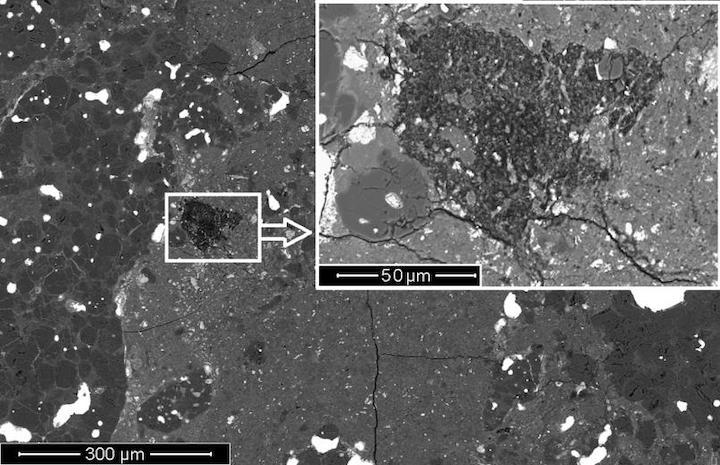The microscope is one of only a few of its kind in the world. Along with other state-of-the art measurement and nanofabrication equipment located in the Institute, it enables NRL scientists and engineers to discover and develop new nanotechnology for the Navy and the Marine Corps.
“Having this capability at the lab is ideal,” De Gregorio said. “It helps us stay on the cutting edge of science, and contributes to amazing studies like this one.”
De Gregorio, a researcher with NRL’s Materials Science and Technology Division, called the confluence of cosmic events that led to the finding “amazing,” and “an incredible journey” for an ancient dust particle.
“This particle formed at the beginning of our solar system,” he said. “[It] had to travel from the outer comet-forming regions, become embedded in asteroids forming in the interior of our system. [Then an asteroid had to] break apart in just the right way to form a meteoroid with the dust particle in it. Then the meteorite had to land on Antarctica in just the right spot to be collected by a field scientist.”
The researchers validated the dust’s cometary heritage from its pre-solar grains, tiny particles of primarily carbon, which have a specific isotopic chemical signature not found in material originating within our solar system, and from the presence of glassy grains containing nanoscale iron metal and sulfides, which are commonly found in other studies of comet dust.
The meteorite was collected in Antarctica during the 2002 field season of NASA’s Antarctic Search for Meteorites (ANSMET) program. This work was funded by NASA’s Science Mission Directorate, through grants NNX10AI63G and NNH16AC42I, and by Spanish Ministry of Science grants AYA 2011-26522 and AYA 2015-67175-P.
The published research used resources of the Advanced Light Source, which is a U.S. Department of Energy Office of Science user facility under contract number DE-AC02-05CH11231.
Quelle: U.S. Naval Research Lab

